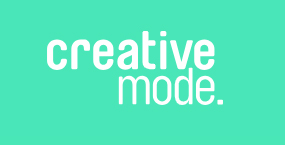When websites were first going mainstream in Australia, the word ‘strategy’ was a bit strange and unknown. It was used by high-level brand managers from the old print / radio / outdoor media advertising crowd but wasn’t really applied so much for websites. At that time, hardly any other designers knew how powerful Google was (including those old school ad people) and it was really just a matter of reading the Google patent docs to find out what Google wanted. You’d then put your optimised web pages up (Home, About Us, Services, Contact, Privacy, Terms – remember those basic sites?!) get some good titles and keywords in there and voila – huge traffic, much enquiries.
Not so simple today hey?! Now we have external signals to contend with and a complex digital system with many more website and marketing tasks to attend to – and a lot more competition.
This is why strategy is now standard. We need to spend time on what’s most effective. Let me walk you through an example that shows the value of strategy.
What is digital strategy?
Strategy is quite familiar now to anyone managing a serious business website. It simply means ‘having a goal and a plan to get there’. Easy right? There’s a saying I always loved: ‘A goal without a plan is just a wish’. Sometimes for a small business just having a defined goal is difficult but what I want to talk about today is how strategy (planning to achieve your goal) makes life easy for a small business. It’s definitely worth doing as part of any digital project if you get the opportunity.
Why is strategy important?
When it comes to digital strategy we make the plan in order to focus our efforts for a better return and a faster path to results. We start with your goal and figure out what steps you should take to get there over what period of time. It’s important for small business owners because both time and money are in-demand resources making focussed marketing an essential for growth. A lack of planning is often what holds owner-operators back from consistent growth.
Strategy examples
How does strategy focus time and money? Let’s look at an example for perspective.
Defining your market
A key aspect of digital strategy is defining your target market and then creating ‘personas’ for market segments. A persona is basically a made up ‘ideal client’ for a particular product or service. Let’s say in this case we create a persona for our most desirable and profitable client and call him ‘Jim’. Our persona includes information around Jim’s story including how he makes product choices, what he’s looking for specifically, what motivates him and what problems he’s trying to solve.
Choosing your channels
Now let’s look at another aspect of digital strategy. Choosing your channels (i.e. where will you spend time communicating with your target market). The question I hear so often is ‘Should we have a Facebook page?’ and then the next most common question ‘What should we be posting on Facebook?’.
If you have a digital strategy in place those questions are easy to answer. Does Jim hang out in Facebook? Yes? Well then the answer is ‘Yes, you should have a Facebook page’. What should you post? The answer to that question is ‘What does Jim need to know?’
With a digital strategy we have a list of ideas to refer to, guidelines for the sort of messaging that will appeal to Jim, an understanding of Jim’s needs and that means what we post will resonate. When Jim feels that we really understand him and can provide what he needs we have a greater chance of helping him out as an actual customer (thus gaining a conversion).
Having this documented and thinking about this when planning content builds a very deep understanding of your customers over time. Particularly if you are measuring results and revisiting the personas from time to time. Refinement is amazing. A documented strategy It provides something to hand-off to others who may be involved in your marketing or producing content and it just saves time with the back and forth because it makes it possible to hit the mark faster when everyone understands.
Matching strategy to available resources
But there’s still more to consider. Sometimes, even though the answer is ‘yes’ to the Facebook page, you might not have the time, copy and graphic skills to be building and managing an audience in Facebook. In which case perhaps advertising will be a faster and cheaper path to your desired result. Your digital strategy will take your available resources and desired timeframes into account and provide solutions that are based on reality.
Bringing it all together
The outcome of a good digital strategy is a very clear focus on your ideal client and their needs which in turn means every cent you spend and every hour you invest is going to be focussed on what will drive success.
Contrast that to random communication across multiple channels, talking broadly to everyone and having an inconsistent message and hopefully you can now see the value in strategy.
A digital strategy collects all your information into one place providing a handy reference for marketing decisions and providing a plan that will keep you focussed on the right tasks for achieving your set goals. In the end it’s strategy that helps you get better results online (faster).
Have a good week!
